Kids get hands dirty digging for fossils from the age of dinosaurs
-
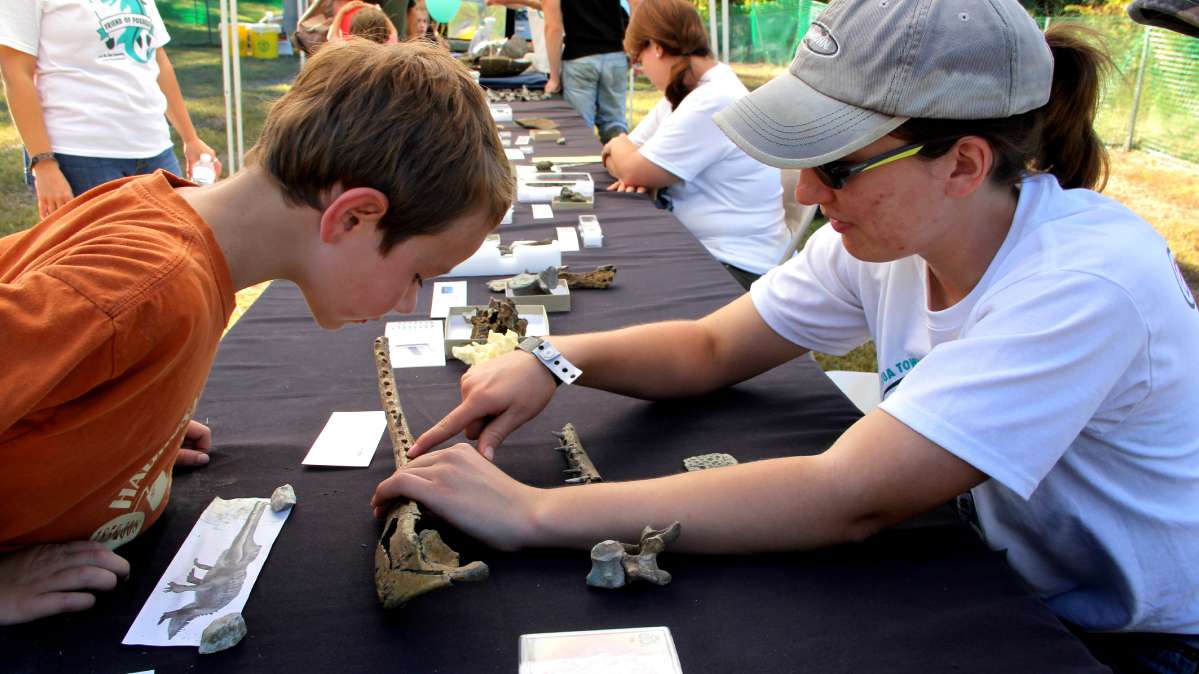
-
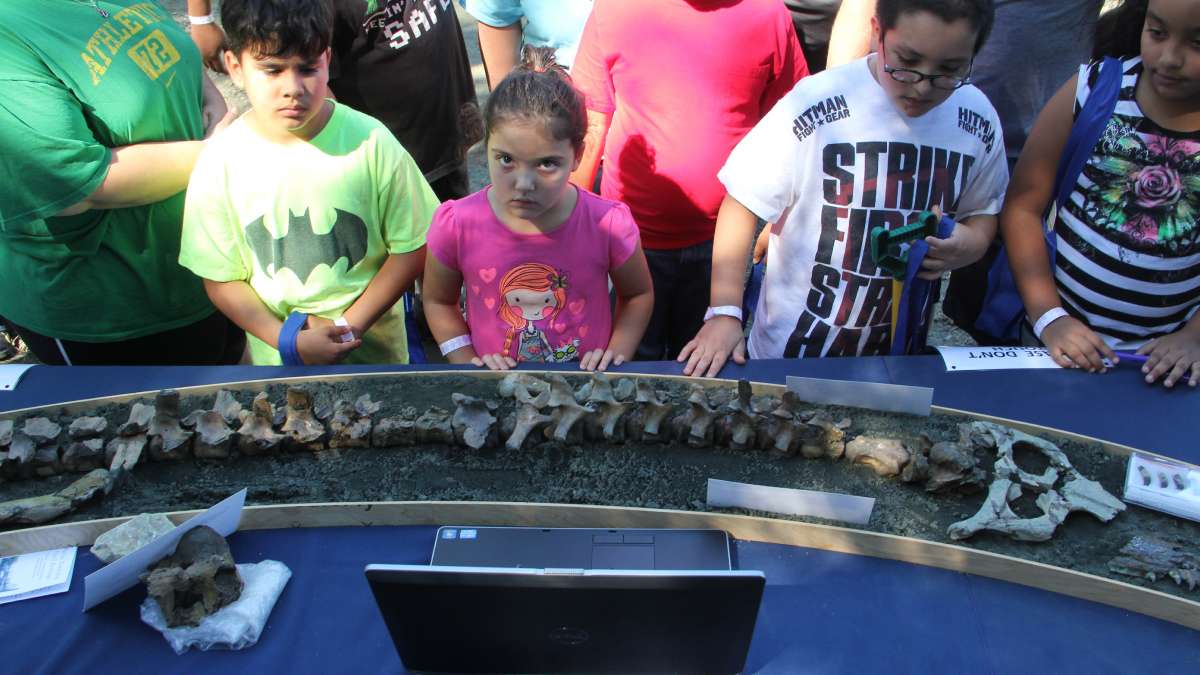
-
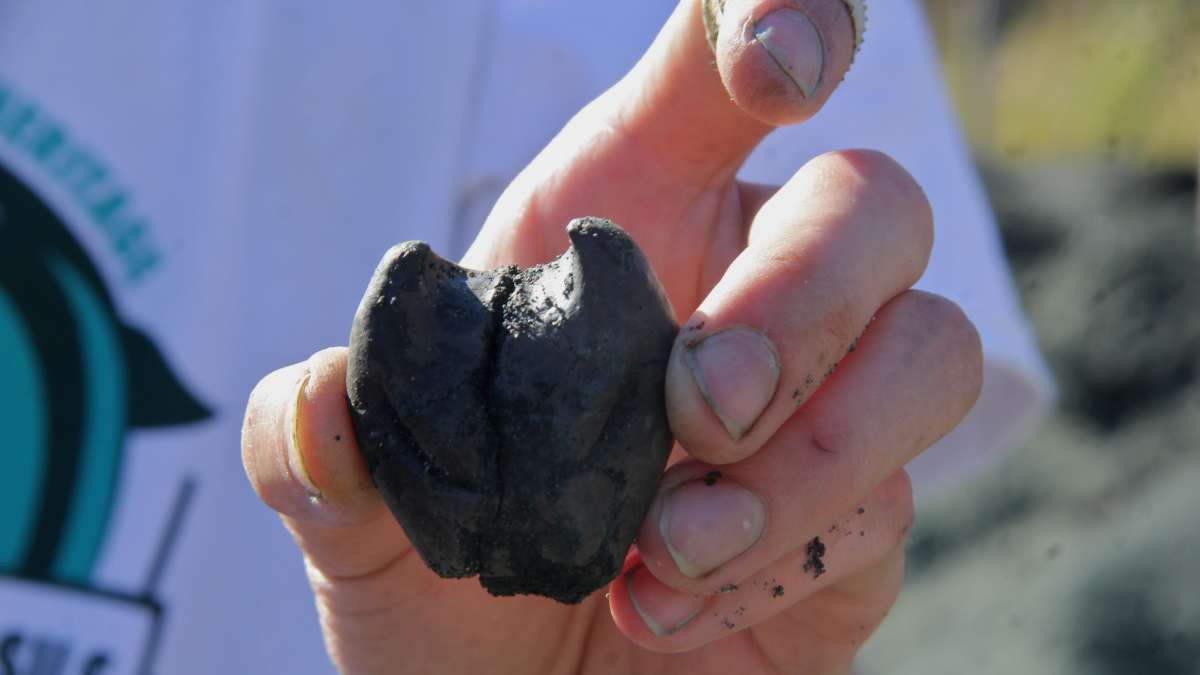
-
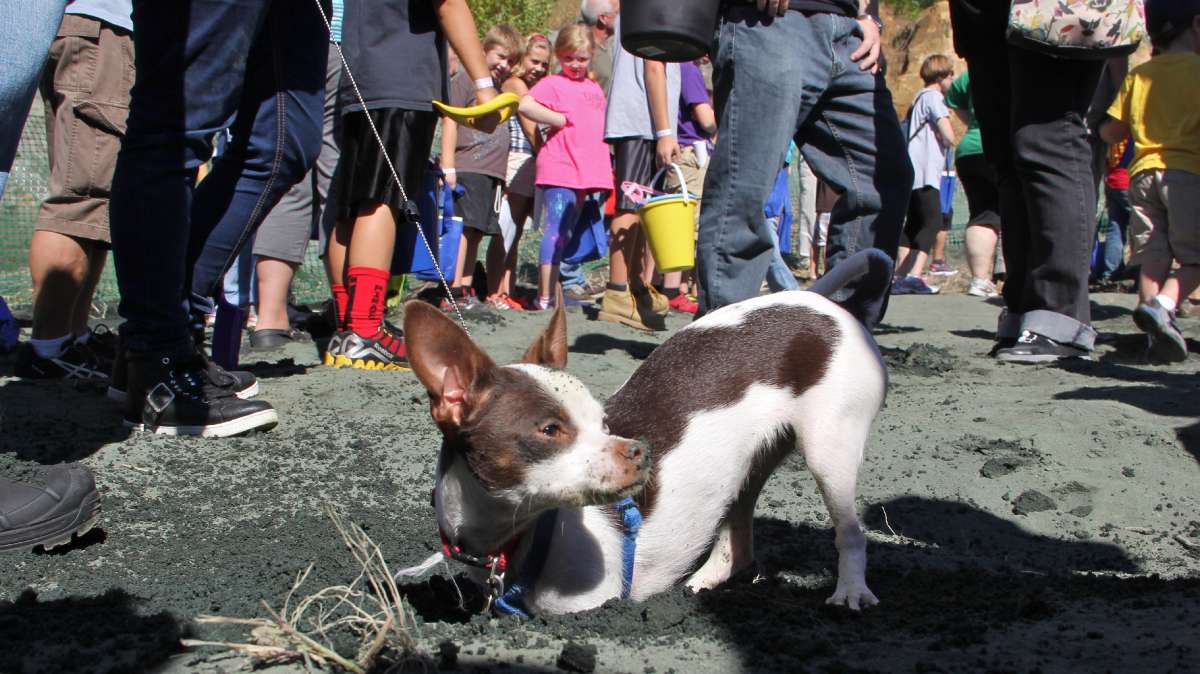
-
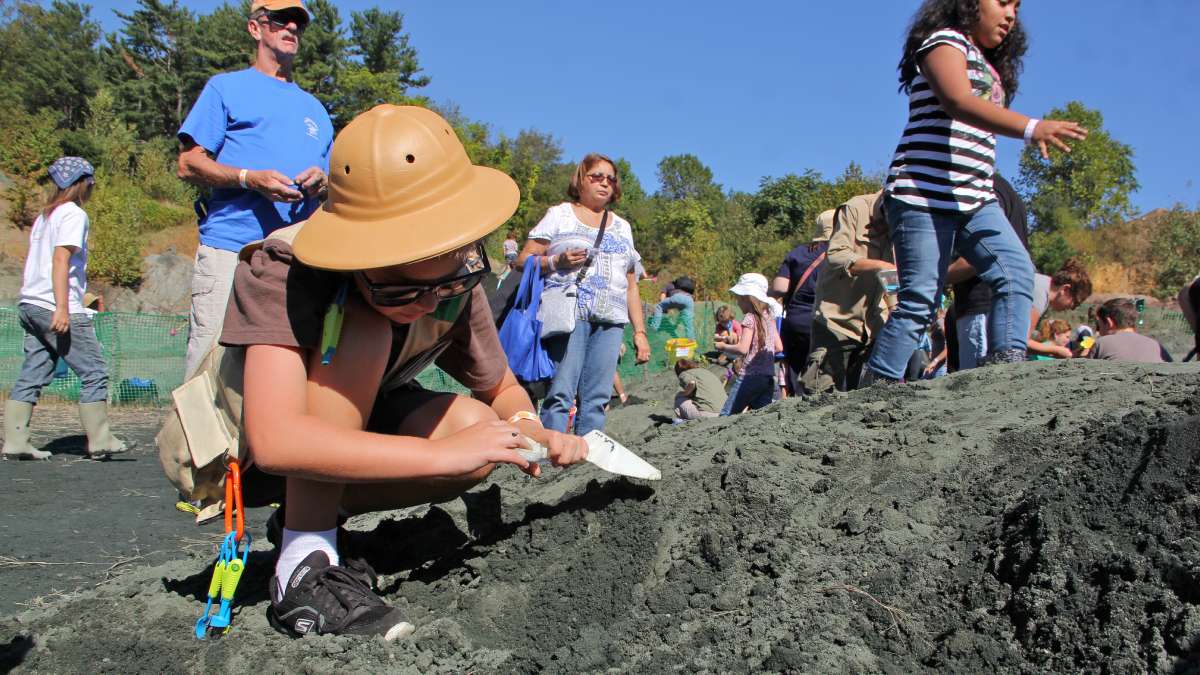
-
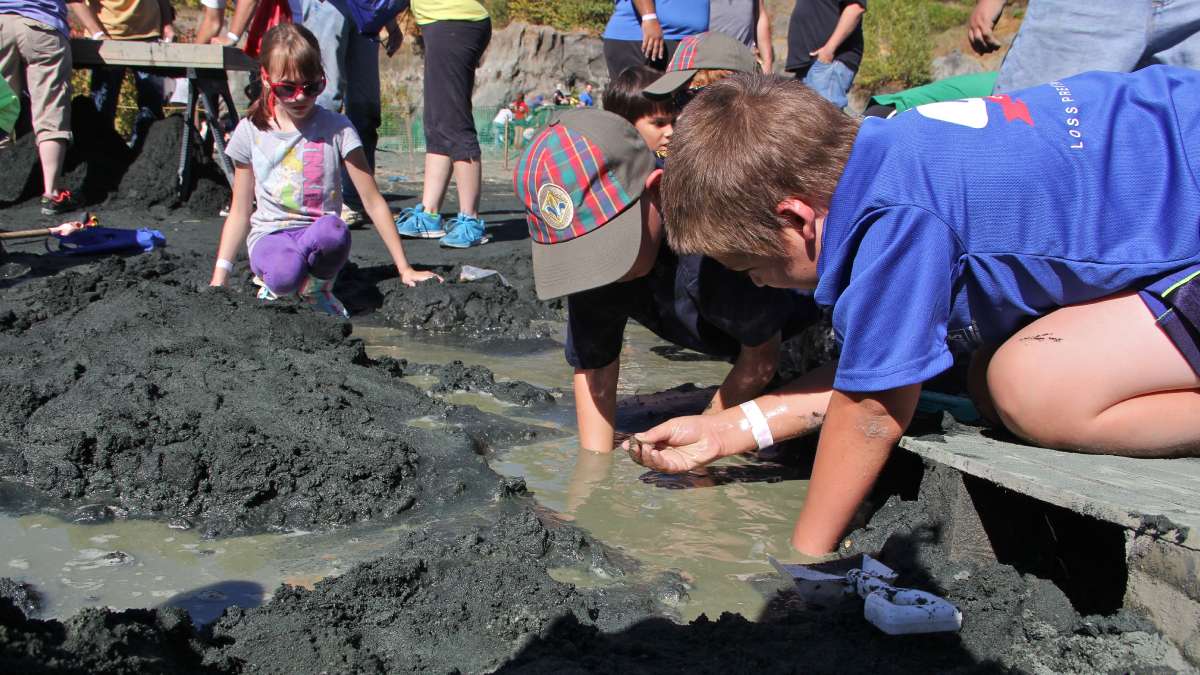
-
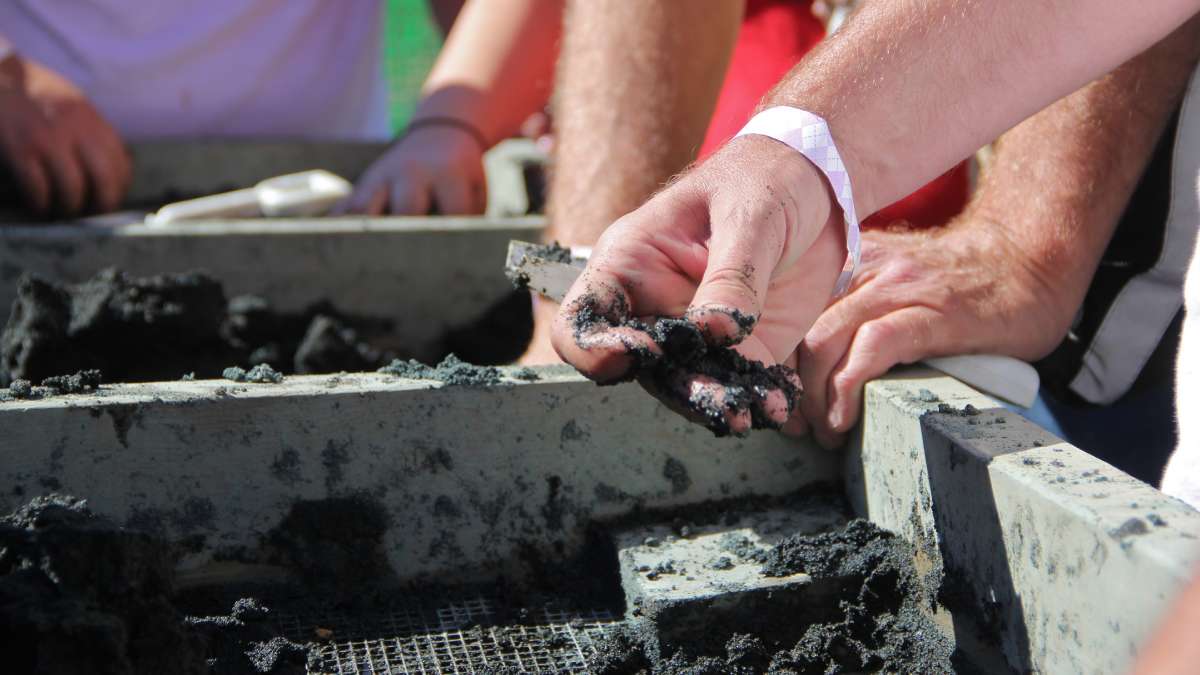
Eager hands sift through dirt, searching for shells and teeth and fragments of bones during a community dig day at the Mantua Township fossil site. (Emma Lee/WHYY)
-
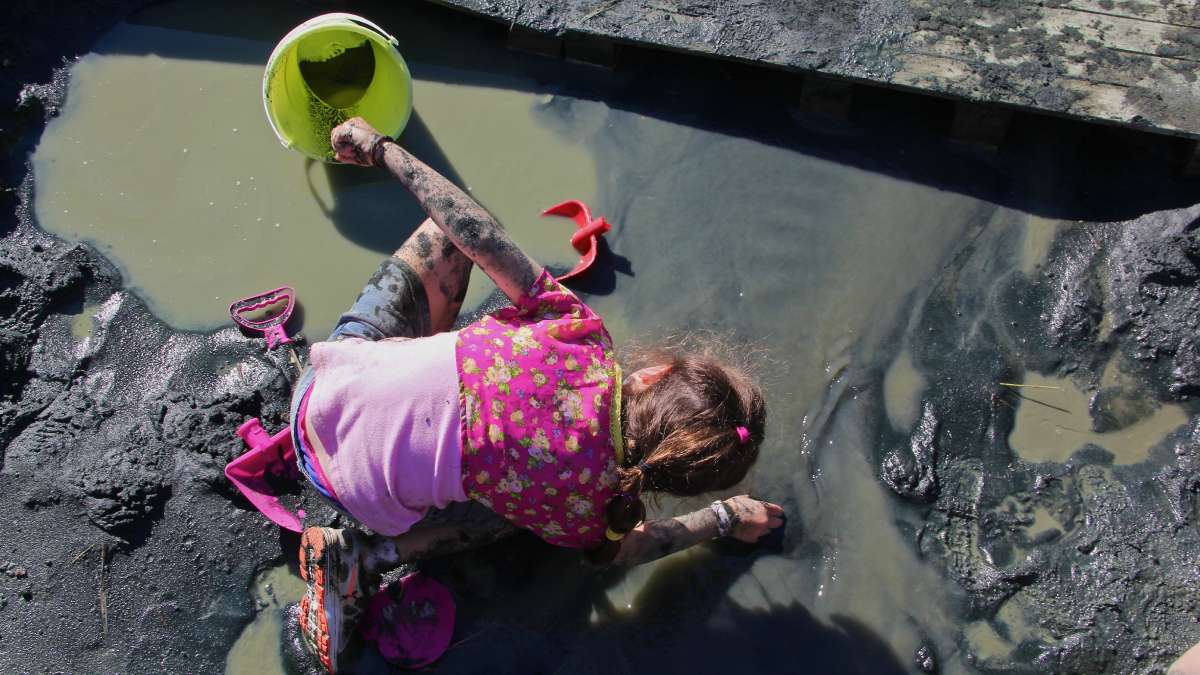
-
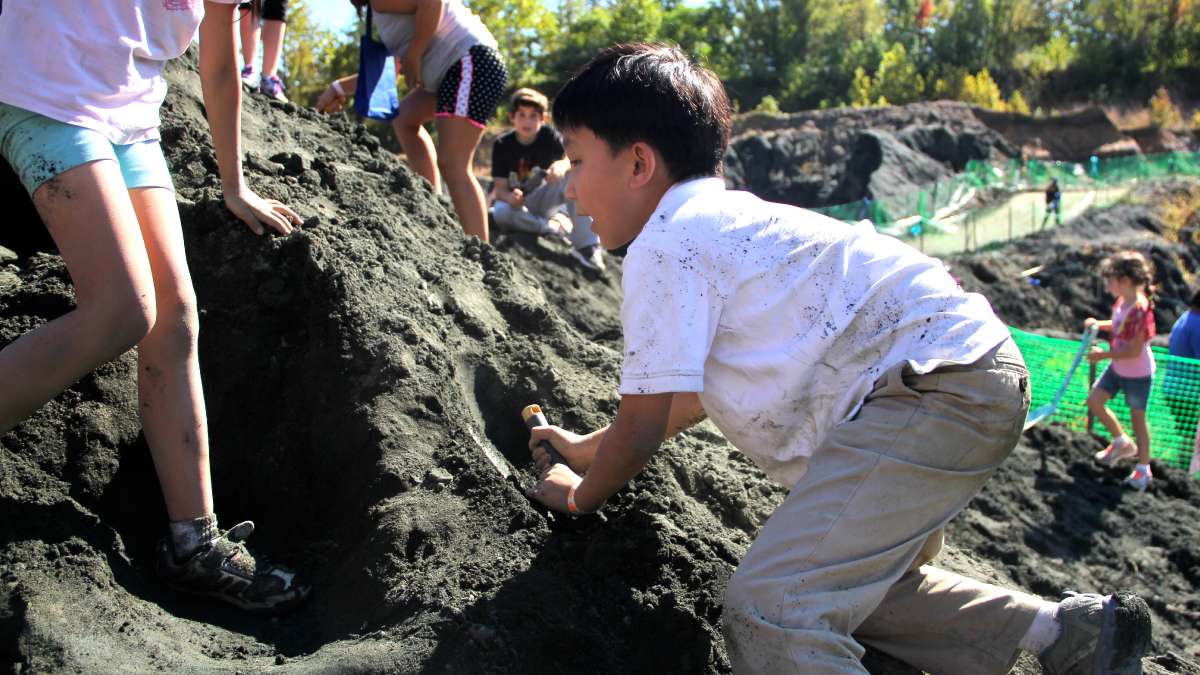
-
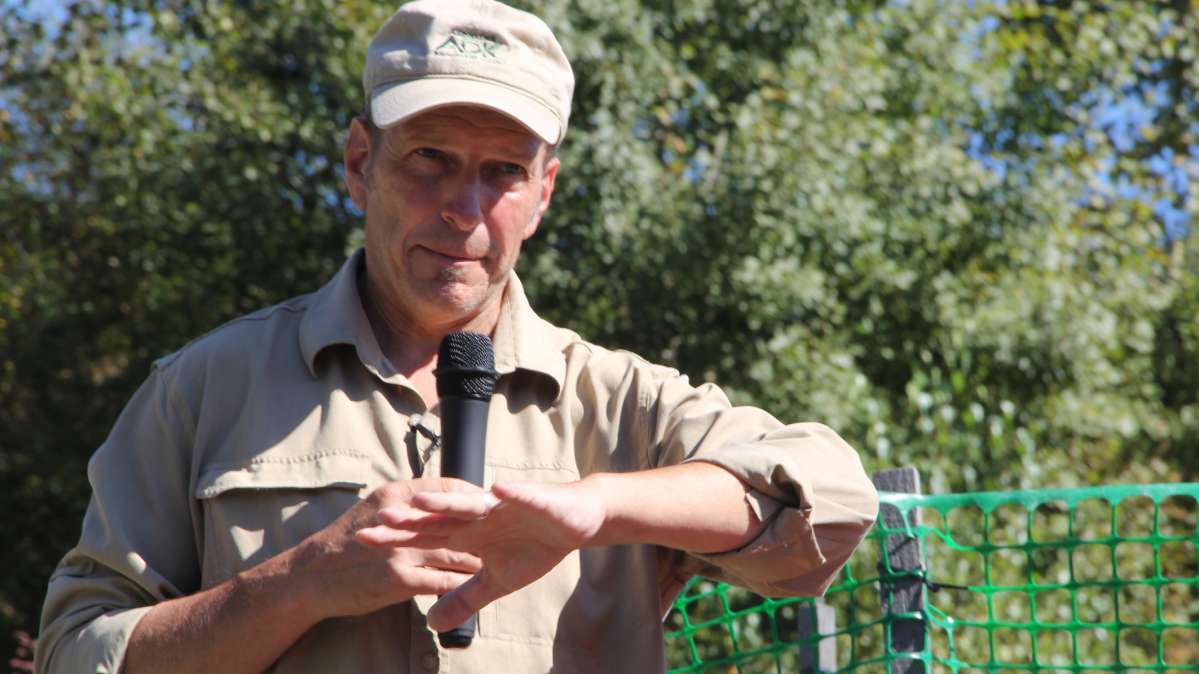
-

-
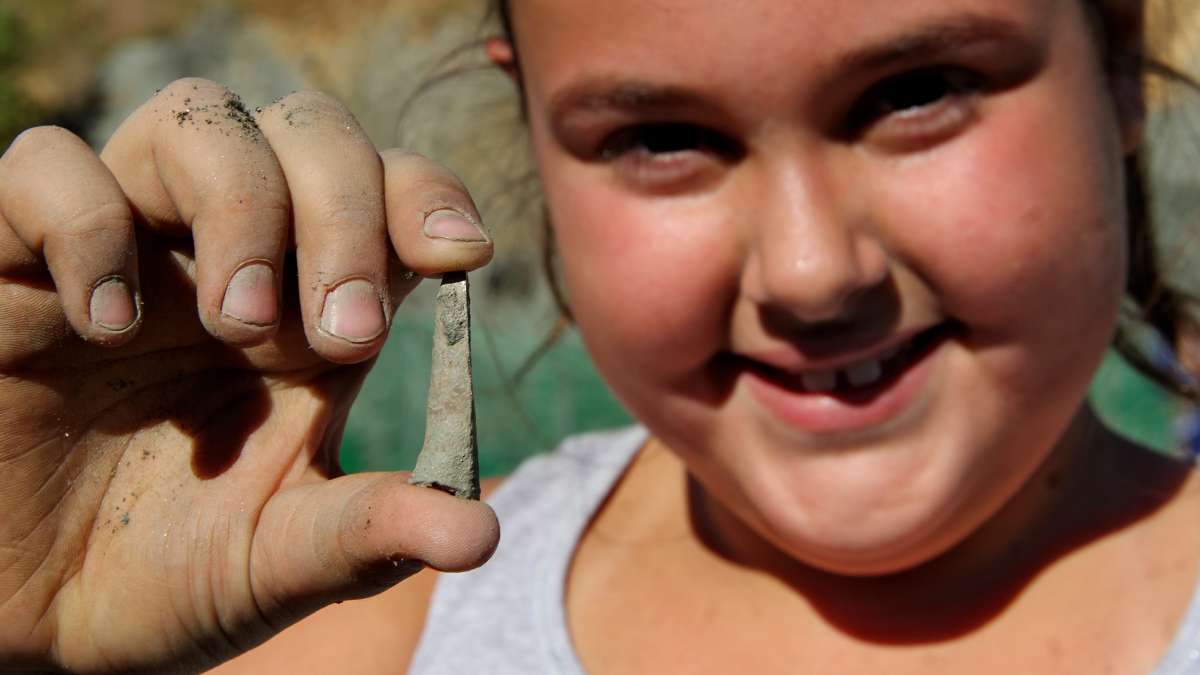
More than 1,000 people, many of them under 10 years old, descended into a mining pit in southern New Jersey on Saturday for a once-a-year chance to dig up some fossils from the age of the dinosaurs.
Community Fossil Day, a joint effort of Drexel University, the Township of Mantua and the Inversand Company, which owns the pit, has drawn thousands of people since its inception three years ago. After the first year, organizers capped attendance at 1,200. The spots fill up quickly.
Leia Szychulski of Vineland said her family signed up nearly a year ago. By the end of the day, sons Roman, 6, and Rhys, 2, had a handful of treasures which included a steinkern, the fossilized interior cast of a clam-like animal.
“The other things we found are kind of bupkis, but the kids are happy,” said Szychulski. “I thought it was really awesome. We got our picture taken with a paleontologist.”
That paleontologist was Ken Lacovara, a Drexel professor who earned fame when he unearthed one of the world’s largest dinosaurs. He presided over the event, delivering a brief lecture about the history of the site and walking among the diggers, answering their questions. He would like to see the property transformed into a fossil park.
“Paleontology is a gateway drug to the sciences,” said Lacovara. He aims to use children’s fascination with dinosaurs to get them hooked on the scientific method, which would serve them well in other STEM fields (science, technology, engineering and mathematics). Mantua Township is seeking state Green Acres funds to help purchase the 65-acre property and events like Fossil Day raise money and awareness. No fee was charged, but participants were encouraged to make a donation.
The Inversand Company mines greensand, used in water purification processes, which was deposited during the late Cretaceous period when dinosaurs roamed the earth. However, those hoping to find T. rex bones were likely to be disappointed. During the Cretaceous, New Jersey was under water. The fossils visitors find there include clam shells, coral-like bryozoans, shark teeth and pieces of turtle shell.
The find of the day was made by 8-year-old Dana Juliani, who uncovered an inch-long tooth belonging to the extinct fish enchodus, more popularly known as the saber-toothed herring. Although it was a rare find, Dana got to keep her tooth because it was not scientifically significant. The area where it was discovered had been disturbed.
“There’s no context for it,” said Lacovara. The context that interests him a six-inch fossil-rich layer that contains evidence of a mass die-off about 65 million years ago. Lacovara would like to link that layer to the asteroid strike that ended the dinosaurs and 75 percent of the life forms on Earth. He and his students are working a roped-off section of the site not open to the public.
“We know we’re close. Maybe this is that day,” said Lacovara. “We’re testing that question, but close in geology is a million years.”
For more information on Community Fossil Day and how to sign up for next year, visit the Drexel website.
WHYY is your source for fact-based, in-depth journalism and information. As a nonprofit organization, we rely on financial support from readers like you. Please give today.


